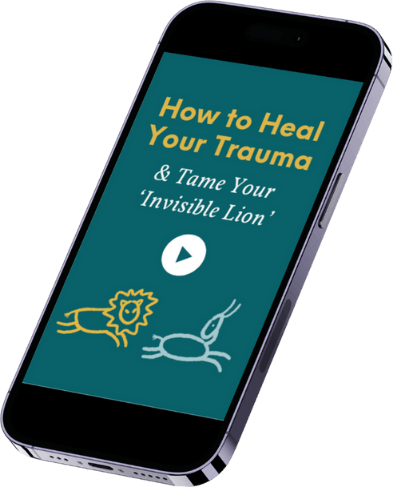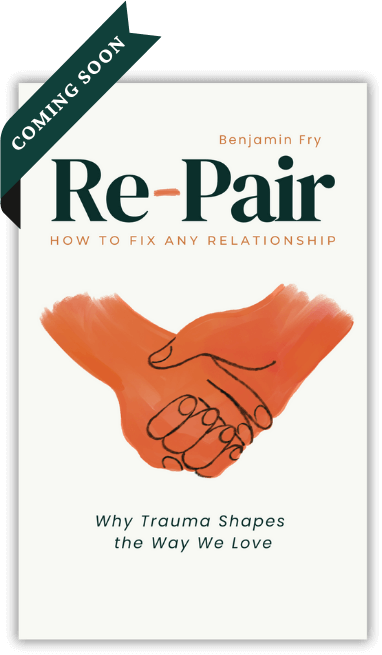In general, individuals who have not finished responding (see unfinished business) to an earlier threat in life are left with baggage in their nervous system. This either speeds them up or slows them down, leading to them over- or under-reacting to new stimuli in life, which we sometimes call triggers if they lead to one of these out-of-scale reactions. Sometimes, however, we get it just right, and so we have three basic ways of reacting to a stimulus, or trigger. We can draw these three different ways of reacting as three different diagrams like below. The red squiggle represents your baggage, the green arrow is a trigger, and the red arrow is your output, or reaction.
Overreaction:

Under-reaction: (In this diagram, the box represents little to no reaction, where the energy is instead internalised.)

Just right, or Goldilocks reaction:

If we go with the idea that any one person can be represented by any one of these diagrams, then we can begin to build a picture of the kinds of relationships we have in life. These can be romantic relationships, or any type of relationship; family, friends, colleagues. We sometimes find that the dynamics discussed here are most noticeable or extreme in romantic relationships, so that’s a good focus to illustrate the points, but the analysis works for everyone.
If you have three kinds of people, then you can have six kinds of relationships.. We are going to look at each in turn and you can see if you recognise yourself, or others, on either side of these relationships.
Over-reaction with an over-reaction
I want you to imagine the people represented in the diagram above standing next to each other. For our first example we are going to take two over-reacting types of people and place them on the page together. Then I want you to imagine that you are going to turn them into an animated cartoon. What happens to those arrows? How would the cartoon develop over time? What would get bigger and what would get smaller?

The next stage in your imaginary animation is for you to allow both of these people to move left to right on the page. Which direction do you think they would both like to go in? they start off comfortable sitting next to each other, but then as the energy in their reactions escalates, where do they go?
I see this as a situation where they briefly lock horns, drawn towards each other by the conflict, and then the explosive energy is too much, so they fly apart to the far left and right of the page, probably exhausted, needing recovery.
But then what? They are now loitering around on their own and this probably feels uncomfortable given how used they are to conflict. So, chances are they meet up again and the whole cycle starts all over.
Does this remind you of anyone?
Many family relationships are like this. People are reluctant to give up on the relationship because it is unique, but also they find that whenever they get together it is only a matter of time before the relationship explodes. Friends and colleagues are more likely to move on, being less invested in each other often, but you will find that these relationships are replicated with the next friend, or the next job, or in the next town. The dynamic comes from within and we tend to choose similar people to act it out in.
And of course, romantic relationships like this are like all the others on speed. We often confuse volatility with passion. Great novels and movies are written about the excitement of such bumpy rides between two people who are so ‘in love’ that they can’t ever let go. In real life it doesn’t usually end well.
Sooner or later, one of the parties to this relationship wants to grow up and get healthier. There’s an innate exhaustion that kicks in and often with that an awareness that something on the inside needs to change too.
Relationships should service the repair and recovery of our nervous systems, not exasperate their most fragile wounds. If your relationships aren’t doing that, then we need to find a different way to react and to respond to stimuli and triggers.
You can download this post in a handy 2-page PDF to print and share with friends, family, clients or colleagues. Follow this link to download now.
You can buy a copy of The Invisible Lion now on kindle or paperback from your local Amazon store. Just click here to buy now.






